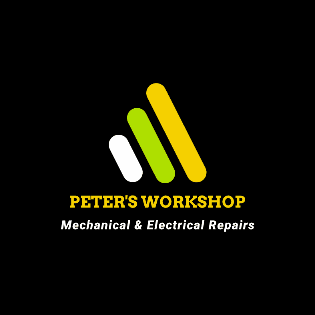



OPINIONS AND THOUGHTS
Sandblasting at Home?
Complexity: Medium
First Thoughts
In my opinion, it would be worth starting this post by saying that sandblasting is a rather unusual surface cleaning process. What do I mean by that?
Well, this is quite far from other well-known surface cleaning procedures, and not to mention that it is a pretty tough task, which is full of accident factors. On top of all this, even a pretty dirty task. So, in three words, it’s a real teddy bear work.
I only recommend it to well-qualified heavyweight boys who want to train their endurance. Telling the truth I only do this beautiful work at certain periods when the need arises, but at such times I am happy to blow the sand despite all the difficulties.
Of course, the focus will be only on my individual experiences, results, and personal opinions here. Don't forget that without well-established knowledge and deep experience, it is NOT worth playing with sandblasting systems or similar activities. Safety first, and always keep in mind my three key messages about safety. Do not try experiments at home! Call an expert if you are not qualified! Never take unnecessary risks!

Now that might be the question, why am I doing it with full enthusiasm?
In short, my answer is that it is a separate branch of science.
So, explained in more detailed, through this essential and unavoidable procedure - plus primers with a high epoxy resin content - I am able to stop the time in terms of corrosion of metal parts, which is not such a negligible thing.
I am absolutely convinced that, sandblasting is the most important starting point for any metal conservation, and that this is the key to long-term metal surface protection. If this step is missing, we will paint almost completely unnecessarily, as this way our card castle will collapse in a very short time.
Anyway, the other crucial point - if we are already here - is the way and raw material of painting process, where it is very easy to make nice big mistakes if someone is not so experienced yet, but that will be another topic.

Building the necessary infrastructure
Let’s start with the fact that there are a wide range of sandblaster tools available on the market, and most of them are literally just ridiculous powder spray toys, and frankly, I consider them a waste of time and money. Completely independently of the fact that the given device operates only on the basis of a small drop tank or even on the principle of vacuum suction, because all this is not enough for effective and meaningful work.
So, I tried at least 4-5 types of smaller sandblaster tools in all kinds of better brands, and finally bought a much more serious and larger high pressure sandblaster machine. Anyway, if I really had to pick out one of the best little sand blasting guns, then perhaps the device shown in the picture below would be the best of them.
With these few sentences, I think I have already said the most important thing about them, and so I will not continue the article in this direction.

High pressure sandblaster
The high pressure sandblaster tank - having a working pressure of typically 6-9 bar - operates on a fundamentally different principle than the small gadgets mentioned above, since the total content of sand in the tank is under high pressure.
Thus, the sand - together with the compressed air - flows into the gun at a tremendous speed rate. This air-sand mixture requires a very thick and flexible - but not too long - rubber tube as this mixture has a strong abrasive effect.

At the end of the sandblaster gun there is a very important component, the nozzle. The role of this ceramic nozzle is to shoot the sand passing through it in a very concentrated jet at an even higher speed. So it essentially accelerates the high pressure air-sand mixture at the exit point,
which will finally become a very dangerous and terribly strong abrasive jet of sand, which can easily destroy ceramics as well. The only difference between the nozzles in the image below is that about 300 kg of sand has already run through the right component.

Perhaps even more spectacular is the next image, which shows how the sprinkler looks like after about half a ton of sand.

I think we can quite safely say that the closing part of the tap is ready for replacement. Thus, it is already more visible that there is no paint that can resist the abrasive effect of the sand, and this process removes rust from the roots.

This method of sandblasting falls already into the heavy industry category, which can only be recommended for home use with great and serious responsibility, because it is very far from the commercial mass products which are available almost anywhere.
In my experience, if a 3 mm nozzle is used, it works optimally if the amount of incoming air at a pressure of 6 bar is at least 450 l/min, so that the sand dosing is 25%. Anyway, its air demand is awful huge, which means 190-800 l/min, but I will talk about this separately in the upcoming compressors section.

What about the air compressor?
First of all, in this article I only want to deal with V-belt driven reciprocating air compressors, even though I have already worked with screw and direct driven compressors as well.
So, there is no doubt that the high-performance compressor is the key to success in the field of sandblasting.
What do I mean by high-performance?
Well, the 2.2 kW electricity demand with an air supply of 400 liters/minute can only be called the entry category with great benevolence, and don’t be surprised if a more serious professional just smiles at our infrastructure.
Of course, this definition alone means a buffer tank of at least 100 liters, but do not believe that the size of the tank is the most important thing, because the effective air supply performance of the compressor head at a given pressure point - such as 6 bar - is the most determining factor in this matter.
It is so important that I have to emphasize once again. So, always keep in mind that only the air compression capacity - which can be projected for one minute - is only the main parameter and not the buffer tank. Anyway, the size of the tank is not the second issue either, as the lowest possible engine speed - such as 1000 rpm - is much more important, which assumes a large stroke length in itself in the knowledge of the above-mentioned parameters.
By the way, what follows from low engine speed?
Less friction and less heat load and more durable operation, since sandblasting is usually a fairly long process that can be measured in hours.

So far we have already clarified that the efficiency of sandblasting is greatly influenced by the right quality and quantity of the compressed air supply.
Therefore, the length and cross-section of the air hose connecting the compressor to the high-pressure sandblaster tank must also be appropriate. In my experience, if the inside diameter of the hose is 3/8", then it can be about 10m long, but in no case more than 15m. In addition, it is advisable to choose the hose with the largest possible wall thickness, as the hot air coming out of the compressor quickly destroys the simpler hoses.

Last, but not least it is also a necessary precondition that the inlet air of the high pressure sandblaster tank must be free of water and oil contaminants. Therefore, it also has its own condensed water separation unit, but it is also important that the air leaving the compressor must also be filtered very well, because it goes without saying that the sand must always be absolutely dry.

The abrasive material
The right choice of the abrasive material is pretty simple for me, because I don't have a sand mine either. That is always the best I can get cheaply, because during a more serious cleaning process a few hundred kg of sand evaporates very quickly.
However, a little more scientifically I can say that the abrasive sand in the 200-400 micro mm class is obviously only recommended for very fine works, and I would only use this at lower air pressures to clean mainly aluminum surfaces such as a dirty cylinder head.
For even finer works - such as cleaning the outside of a carburetor - I can recommend simple washing soda, which has the great advantage that it decomposes immediately when exposed to water.
Finally, I like cleaning the more serious steel surfaces with unclassified abrasive sand over 600 micro millimeters, which may contain grains of sand larger than 1000 micro mm as well.
